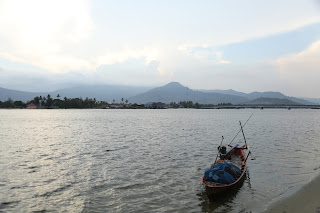The lengths of time between the beginning and the end is an important element of my films but as a director I have to be patient and wait for the right moment to start and finish the film within one long take even if I work without "actors" on certain locations only with natural elements, birds, trains, trespassing people, etc...
That not means I don't cut the final starting and ending point in post production but the story must have a clear beginning, a middle and the end. Using small and medium size digital cameras are quite convenient and much cheaper than shooting on 8 mm, 16 mm or 35 mm, but the colors and the outlook of the film is totally different. I'm not the only one who simply can't afford shooting with film cameras but maybe in the future this can be changed as I have chance to direct more formal slow films.
Making of Sunday of Zen
Making of Sunday of Zen
And about the Sunday of Zen; it was an excellent occasion to shoot this experimental short film and capture a moment close-up from a shy and suspicious dove's daily life. It took weeks to observe patiently the behaviors of the birds (titmouse, pigeons, doves, magpies) living nearby our apartment. They seek shelter in the trees and regularly are coming to visit us for food and some water.
The outdoor traffic sounds, the passenger trains recedes in background all part of our rush of everyday life. We must stop for even short moments despite pressure from powerful forces around us trying to persuade us to take other paths. One day we all will be able to hear the chirping birds and understand the Zen of life. Some of you could ask why the title is Sunday of Zen, ...not only Zen?Here the "Sunday" is referring to Yasujiro Ozu.













































